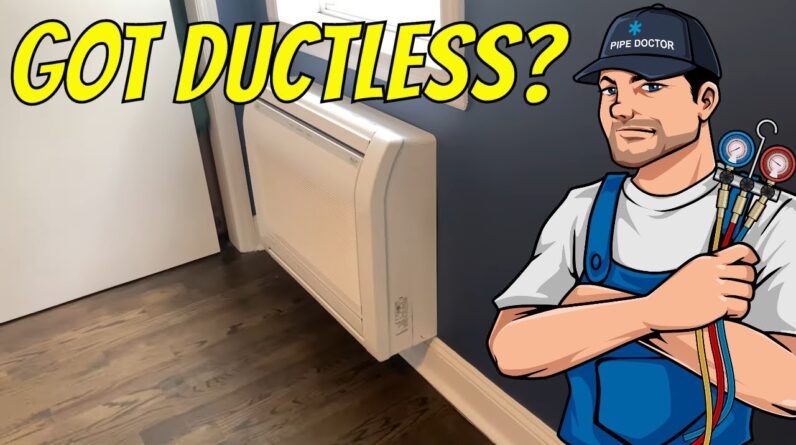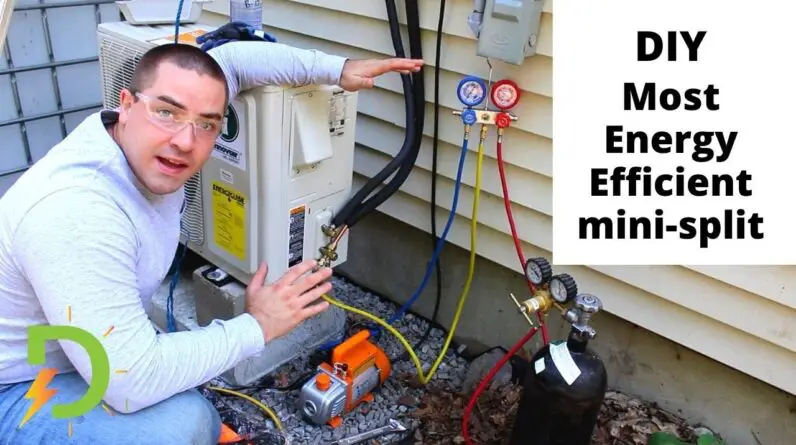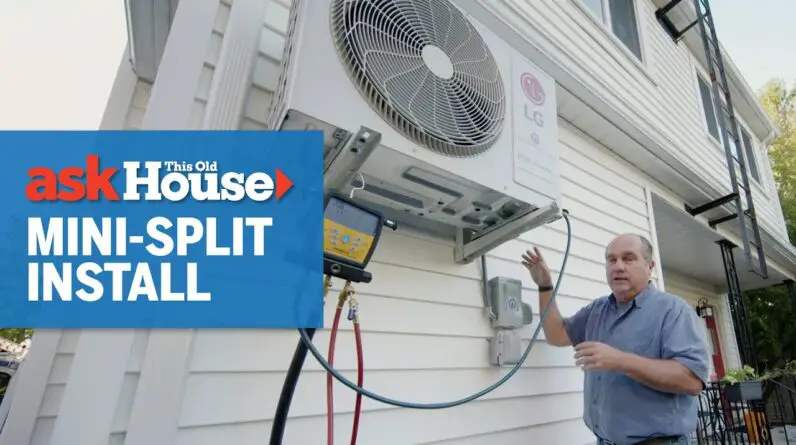Why Mini Splits Are Superior to Central Air Systems
The ongoing debate between mini splits and central air conditioning systems continues to pique the interest of homeowners, energy efficiency enthusiasts, and HVAC professionals alike. As the global focus shifts towards more sustainable and energy-efficient solutions, mini splits have gained a significant foothold in the market. In this comprehensive article, we will delve deep into the myriad of advantages mini splits offer over central air systems, focusing on energy efficiency, individual room control, installation ease, and reduced carbon footprint. We will also touch upon some specific operational mechanisms like the ductless heat pump, which make mini splits an attractive option for a wide range of users.
What Are Mini Splits?
Before diving into the comparison, let’s briefly explain what mini splits are. Mini splits, also known as ductless mini-split systems, are HVAC systems composed of an outdoor unit and one or more indoor units. These indoor units are typically installed on the wall or ceiling and are directly responsible for heating and cooling specific rooms. The absence of ductwork in mini splits is a distinguishing feature, which brings us to their first significant advantage.
Energy Efficiency: The No-Duct Advantage
One of the most compelling advantages of mini splits over central air systems is their inherent energy efficiency. Central air systems depend heavily on ductwork to distribute conditioned air throughout a home. When this ductwork is less than perfect, it leads to significant energy loss. According to industry research, even a well-maintained central air system can lose up to 30% of conditioned air through leaks, holes, and poorly connected ducts. This inefficiency translates into higher energy bills and greater wear and tear on the system.
In contrast, mini splits eliminate this problem entirely because they do not rely on ductwork. Instead, conditioned air is delivered directly from the outdoor unit to the indoor units. This direct delivery system ensures that the air reaches its intended destination without any loss, resulting in a much more energy-efficient operation.
Individual Room Control: Customized Comfort
Another crucial advantage of mini splits is their ability to provide customized temperature control for different rooms or zones. Central air systems work on an all-or-nothing principle, where the entire home is cooled or heated to a preset temperature. This lack of customization can be inefficient, especially in homes where certain rooms are seldom used.
Mini splits offer a high degree of flexibility in this regard. Each indoor unit can be individually controlled, allowing homeowners to set different temperatures for different rooms. For example, you can have the living room set at a cool and comfortable 72 degrees Fahrenheit while keeping an unoccupied guest room at a higher temperature. This zoning capability not only enhances comfort but also contributes significantly to energy savings. Homeowners can turn off units in unused spaces, ensuring that energy is not wasted on cooling or heating empty rooms.
Lowering Your Carbon Footprint
In the era of climate change, reducing one’s carbon footprint has become more important than ever. Mini splits offer an efficient way to achieve this without compromising on comfort. One of the primary ways mini splits lower your carbon footprint is through their efficient use of energy, as mentioned earlier. But there’s more to it.
During winter, traditional heating systems like oil or gas furnaces generate warm air by burning fuel, a process that releases carbon dioxide into the atmosphere. Mini splits use a ductless heat pump, which does not generate heat by burning fuel. Instead, it extracts heat from the outdoor environment and transfers it indoors. This method is significantly more efficient and environmentally friendly, as it relies on the heat exchange principles rather than combustion.
Ease of Installation
The complexity and mess associated with installing central air systems often deter homeowners. Installing ductwork in an existing home can be invasive, time-consuming, and expensive. This is particularly true for older homes that were not originally designed to accommodate modern HVAC systems.
Mini splits offer a straightforward installation process that is much less invasive. Since there is no need for extensive ductwork, installation can often be completed within a day or two. The outdoor unit connects to the indoor units through a small conduit that contains the power cable, refrigerant tubing, suction tubing, and a condensate drain. This conduit requires only a three-inch hole through the wall for installation, minimizing the disruption to the home.
Cost-Effectiveness
While the initial cost of mini splits can be higher than that of central air systems, the long-term savings make them a cost-effective solution. The energy efficiency of mini splits translates into lower utility bills, and their durability means they often require fewer repairs and have longer lifespans compared to central air systems. When factoring in these savings, many homeowners find that mini splits offer a better return on investment over time.
Quiet Operation
Another often-overlooked advantage of mini splits is their quiet operation. Central air systems can be noisy, especially when the ductwork is old or poorly designed. The hum and clatter of the central unit kicking in and air rushing through the ducts can be disruptive.
Mini splits, on the other hand, are designed for quiet operation. The indoor units typically produce noise levels as low as 19 decibels, which is quieter than a whisper. The outdoor units are also quieter compared to traditional central air compressors. This makes mini splits an excellent choice for bedrooms, home offices, and other quiet spaces where noise can be a distraction.
Maintenance and Durability
Regular maintenance is crucial for the longevity and efficiency of any HVAC system. Central air systems require frequent inspections and cleaning of ducts, filters, and other components to ensure they operate efficiently. The complexity of the ductwork can make maintenance a cumbersome task.
Mini splits require less maintenance. Since there is no ductwork, there are fewer components to inspect and clean. The filters in the indoor units are easily accessible and can be cleaned or replaced by the homeowner. Regular maintenance of mini splits involves checking the refrigerant levels, cleaning the coils, and ensuring that the units are free from obstructions. Given their simpler design and fewer components, mini splits often have a longer lifespan with fewer breakdowns compared to central air systems.
Improved Indoor Air Quality
Indoor air quality is a significant concern for many homeowners, especially those with allergies or respiratory issues. Central air systems can harbor dust, mold, and other allergens within their ductwork, which then gets circulated throughout the home.
Mini splits offer a cleaner solution. The absence of ducts means there’s no place for dust and allergens to accumulate. Additionally, many mini split systems come with advanced filtration options that can remove dust, pollen, and other particulates from the air, improving indoor air quality. Regular cleaning of the filters ensures that the air circulating in your home remains clean and healthy.
Versatility and Flexibility
Mini splits are incredibly versatile and can be installed in various settings, from single-room additions to multi-story homes and apartments. Their compact design makes them ideal for spaces where traditional HVAC systems are impractical. Whether you’re looking to cool a small studio apartment or a large family home, there’s a mini-split solution to fit your needs.
Additionally, mini splits can be used in conjunction with existing HVAC systems to create a hybrid solution. For example, if you have a central air system that struggles to cool certain areas of your home, adding a mini split can provide targeted cooling to those problem areas without overhauling your entire HVAC system.
Advanced Features and Smart Technology
Modern mini splits come equipped with a range of advanced features that enhance their usability and efficiency. Many models offer built-in Wi-Fi connectivity, allowing homeowners to control the temperature and settings remotely via smartphone apps. This remote control capability adds a layer of convenience, especially for those who travel frequently or have irregular schedules.
Some systems also come with sensors that detect occupancy and adjust the temperature accordingly. This feature ensures that rooms are only cooled or heated when they are in use, further optimizing energy efficiency. Additionally, many mini splits offer programmable settings, allowing users to create customized schedules that suit their lifestyle.
Support and Customer Service
Choosing the right HVAC solution involves more than just the equipment; it also involves the support and service you receive. Companies like Mighty Fine pride themselves on delivering excellent customer service and high-quality products. From the initial consultation to installation and ongoing maintenance, the support you receive can make a significant difference in your overall experience with mini splits.
If you have questions about the installation process or maintenance of a mini split, companies like Mighty Fine are just a call away, ready to provide expert guidance and support. This commitment to customer satisfaction is an added layer of assurance that you are making the right choice for your home.
Case Studies and Real-World Applications
To further illustrate the advantages of mini splits, let’s look at some real-world scenarios where they have proven to be the superior choice.
Scenario 1: Renovating an Old Home
John and Mary recently purchased a charming old house that lacked modern HVAC infrastructure. Installing a central air system would have required extensive renovations, including tearing down walls to install ductwork. The cost and disruption were daunting. Instead, they opted for a mini-split system. The installation was completed in two days, and they now enjoy personalized comfort in each room. The energy savings have also been noticeable, with their monthly utility bills significantly lower than they anticipated.
Scenario 2: Integrating with Existing Systems
Sarah lives in a home with a central air system that struggles to keep the upstairs bedrooms cool during the hot summer months. Rather than replacing the entire system, she added a mini split for the upstairs area. The targeted cooling has made a tremendous difference in comfort, and the central system no longer has to work overtime, reducing wear and tear and extending its lifespan.
Scenario 3: Commercial Applications
A small office building was facing challenges with its outdated central air system, which was inefficient and costly to run. The building owner decided to switch to mini splits. The individual control units allowed each office to set its preferred temperature, improving employee comfort and satisfaction. The energy efficiency of the mini splits also resulted in significant cost savings on the building’s utility bills.
Addressing Common Concerns
While the advantages of mini splits are clear, some common concerns need to be addressed.
Initial Cost
The initial cost of mini splits can be higher than that of central air systems. However, this upfront investment is often offset by the long-term savings in energy bills and maintenance costs. Additionally, many utility companies offer rebates and incentives for installing energy-efficient systems, which can help mitigate the initial cost.
Aesthetics
Some homeowners are concerned about the aesthetic impact of having indoor units mounted on their walls. While mini split indoor units are more visible than the hidden ducts of central air systems, modern designs are sleek and unobtrusive. Additionally, the benefits of improved comfort, energy efficiency, and flexibility often outweigh the aesthetic considerations.
Conclusion
Mini splits offer a compelling alternative to traditional central air systems. Their energy efficiency, individual room control, ease of installation, and reduced carbon footprint make them an attractive option for homeowners looking to enhance comfort while saving on energy costs. The advanced features, quiet operation, and low maintenance requirements further solidify their position as a superior HVAC solution.
As the focus on sustainability and energy efficiency continues to grow, mini splits are poised to play a significant role in the future of home heating and cooling. Whether you’re renovating an old home, looking to supplement an existing system, or seeking a cleaner, greener HVAC solution, mini splits offer a flexible, cost-effective, and environmentally friendly choice. For those with more questions or in need of expert advice, companies like Mighty Fine are ready to assist, ensuring that you make an informed decision that best suits your needs.
By embracing the advantages of mini splits, homeowners can enjoy personalized comfort, significant energy savings, and contribute to a more sustainable future.






